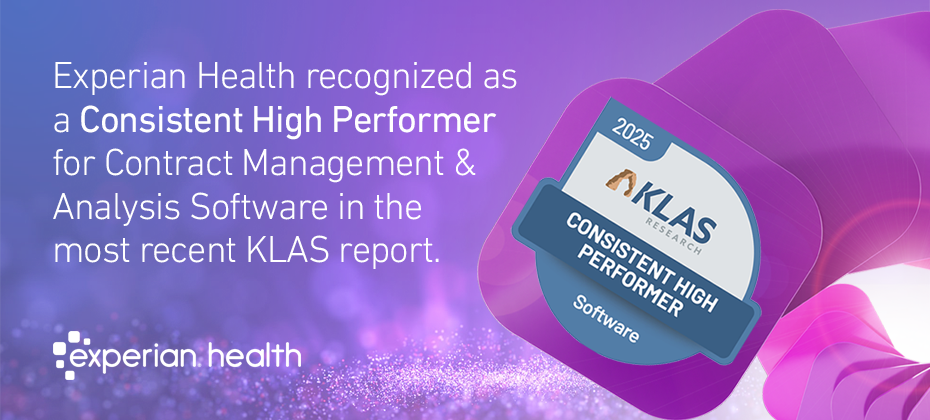
Revenue cycle management (RCM) challenges exist at every stage of the patient journey – from patient intake and registration to insurance eligibility, claims processing and collections. Creating administrative efficiencies, reducing claims denials, improving the patient experience and remaining compliant with payer requirements and industry regulations all play a role in successfully managing revenue cycles and avoiding uncompensated care.
This article takes a closer look at some of the top challenges in revenue cycle management, their root causes and strategies that leaders can use to tackle RCM issues head-on.
Common challenges in revenue cycle management
Staying on top of current RCM challenges helps healthcare organizations keep revenue cycles on track. Some of the key roadblocks in revenue cycle management include:
Complex billing processes
Health payer requirements change often and vary widely among the hundreds of providers operating in the U.S. To avoid delays and lost revenue, claims must be coded and billed correctly – the first time. However, a streamlined approach for error-free insurance eligibility verification, prior authorization and claims processing isn’t always simple for healthcare organizations to implement and maintain. This leads to mistakes, wasted staff time and revenue loss.
Rising claim denials
Claims denials are rising, leaving healthcare organizations to face potential hits to the bottom from delayed or unpaid claims. Denials often occur when claims with incorrect patient information and billing codes are submitted. However, outdated manual processes, overburdened administrative staff and rapidly changing payer requirements can make it tricky for providers to manage the claims process efficiently and error-free consistently.
Collections delays
Collecting payments continues to be a major bottleneck in the revenue cycle, wasting valuable staff time and hurting provider bottom lines. With rising healthcare costs, a growing number of patients are struggling to pay their medical bills—especially when they don’t know the cost of care up front or are self-paying. Estimates created with inaccurate benefits information or missing coverage add to patient and provider frustration and collection delays.
Check out this guide to choosing the right key performance indicators for your revenue cycle dashboard to ensure the effective implementation of RCM strategies.
Why these obstacles persist: Root causes of RCM issues
Current roadblocks in revenue cycle management often persist due to the following root causes:
- Strained resources: Labor shortages continue to plague the healthcare industry – leaving revenue cycle managers tasked with figuring out how to “do more with less.” With staffing shortages expected through 2030, according to American Hospital Association data, maximizing staff time and administrative efficiencies must remain a top priority for the revenue cycle
- Lack of patient access: Some patients think patient access has improved, but there’s still a long way to go. Data from Experian Health’s State of Patient Access survey shows that51% of patients feel patient access has remained static, despite 28% reporting an improvement since the previous year.
- High healthcare costs: Many patients struggle to afford healthcare thanks to climbing out-of-pocket costs, higher premiums and more complicated medical issues. As the cost of care and health insurance continue to rise, patients may be more likely to delay or default on payments. Medical expenses aren’t likely to go down, leaving providers to help patients understand their financial responsibility and provide a simple path to payment.
- Frequent regulation changes:Legislation, like the No Surprises Act, plus ever-changing payer requirements, are time-consuming for busy administrative teams to monitor. Outdated patient intake processes and verification systems further contribute to compliance issues and resulting claims delays and denials.
How healthy is your revenue cycle? Our revenue cycle management checklist helps healthcare organizations catch inefficiencies and find opportunities to boost cash flow.
How to overcome revenue cycle management challenges
The following strategies can help busy RCM leaders take steps toward creating a successful revenue cycle.
Boost patient access
Healthy revenue cycles begin with efficient and streamlined patient access. According to Experian Health data, 60% of patients say they want more digital options to engage with their provider and are willing to switch providers to get more digital access. Patients want it to be simple to book an appointment and complete intake paperwork – on their own time. They want to see their provider quickly, understand the cost of care and have the option to pay bills online or set up a payment plan.
Adopting patient engagement solutions that improve access helps healthcare organizations foster more positive experiences, deliver better outcomes, collect more accurate patient data and increase their bottom lines. Providers can put patients in the driver’s seat with tools that streamline scheduling, registration, estimates and payments. Staff is freed up from repetitive administrative tasks, patient no-shows decline, claims denials are reduced and collections are expedited.
Improve claims management processes
Processing claims is a significant contributing factor toward “wasted” healthcare dollars. According to Experian Health survey data, 73% of respondents agreed that claim denials are increasing, compared to 42% in 2022. Bad data is to blame, with providers saying incorrect information and authorization are driving the uptick in denials. 67% of respondents also agreed that reimbursement times were longer, indicating a broad issue with payer policy changes and claims errors.
Revenue cycle managerswho want to prevent denials, rather than just manage them, can reduce denials withautomated claims management solutions. Tools like Experian Health’s award-winningClaimSource®make the claims editing and submission process effective and efficient. Other solutions, such as Claims Scrubber, help providers submit complete and accurate claims, resulting in more timely reimbursement and a healthier bottom line. In the case of denials, AI AdvantageTM – Denial Triage, uses artificial intelligence (AI) to identify denials with the highest potential for reimbursement, so that teams can focus on remits that have the most impact.
Learn how Indiana University Health processed $632 million in claims transmissions in one week after a halt to operations.
Keep pace with changing payer policies and healthcare regulatory and compliance standards
According to Experian Health survey data, more than 75% of providers agree that payer policy changes are increasing. Staying up to speed on the ever-evolving compliance landscape is critical for RCM leaders who want to reduce claim denials, payment delays, and administrative backlogs. Digital regulatory solutions, like Insurance Eligibility Verification, can help providers keep up with evolving payer policies.
Experian Health’s price transparency solutions, like Patient Estimates and Patient Financial Advisor, allow healthcare organizations to remain compliant with regulatory requirements. Price transparency solutions provide proactive pricing information and make it easier for patients to pay, all while improving patient satisfaction.
Nicole Ready, Revenue Cycle Systems Manager, at South Shore Health and Michael DiCarlo, Sr. Advisor, Revenue Cycle Operations at Northwell Health, discuss how they deliver better patient experiences with Experian Health’s Price Transparency solutions.
Preparing for new and evolving RCM hurdles
Technology will continue to play a defining role in the future of revenue cycle management, for patients, providers and payers. Healthcare organizations can stay competitive by embracing AI and automation-based RCM solutions. From claims processing, verifying COB, MBI, and demographics in one click, prior authorizations to data analytics, RCM leaders can rely on AI and automation toolsto optimize every stage of the revenue management cycle.
Turning RCM roadblocks into opportunities for growth
Revenue cycle management challenges are among the greatest obstacles facing today’s healthcare organizations. However, improvements in digital tools and analytics can help providers keep revenue flowing while maintaining compliance and the patient experience in focus. With the right technology partner, RCM leaders can turn obstacles into growth opportunities. Experian Health’s Revenue Cycle Management solutions can help your organization optimize revenue cycle management from patient intake to reimbursement.
Learn more about how Experian Health’s revenue cycle management solutions help healthcare organizations generate more revenue and increase their bottom lines.


